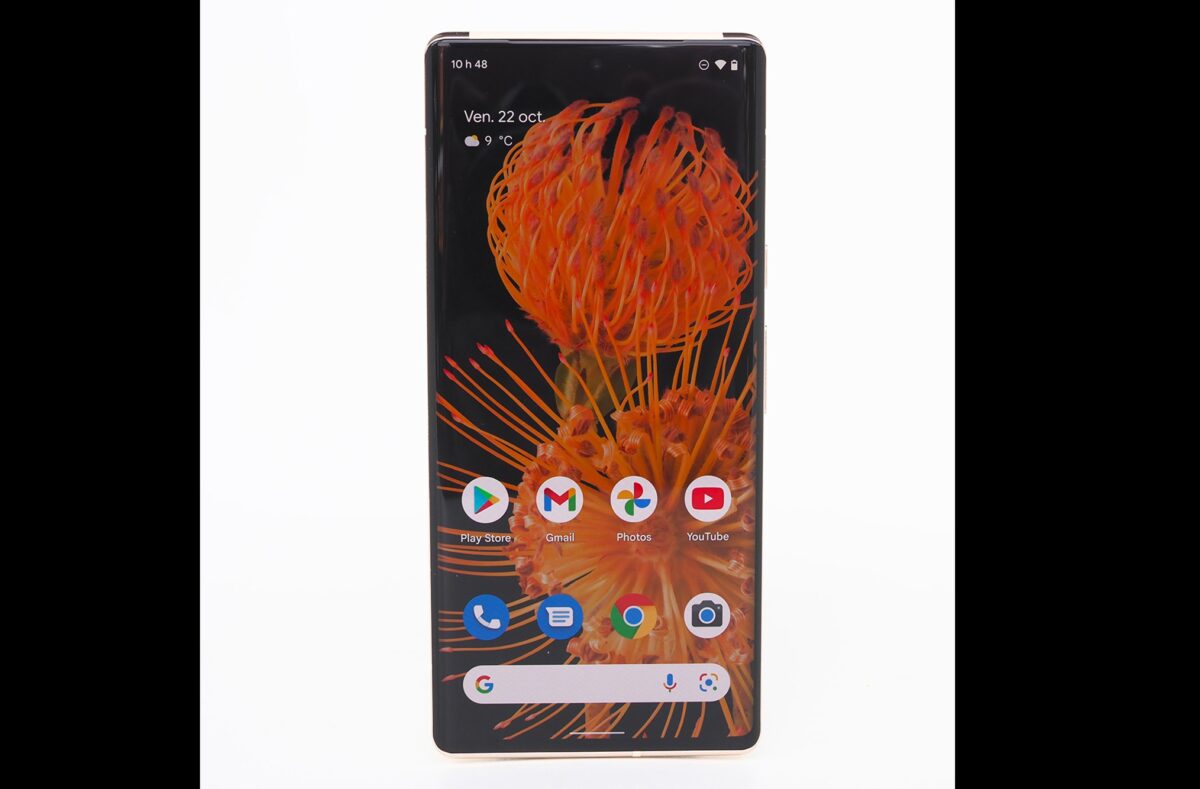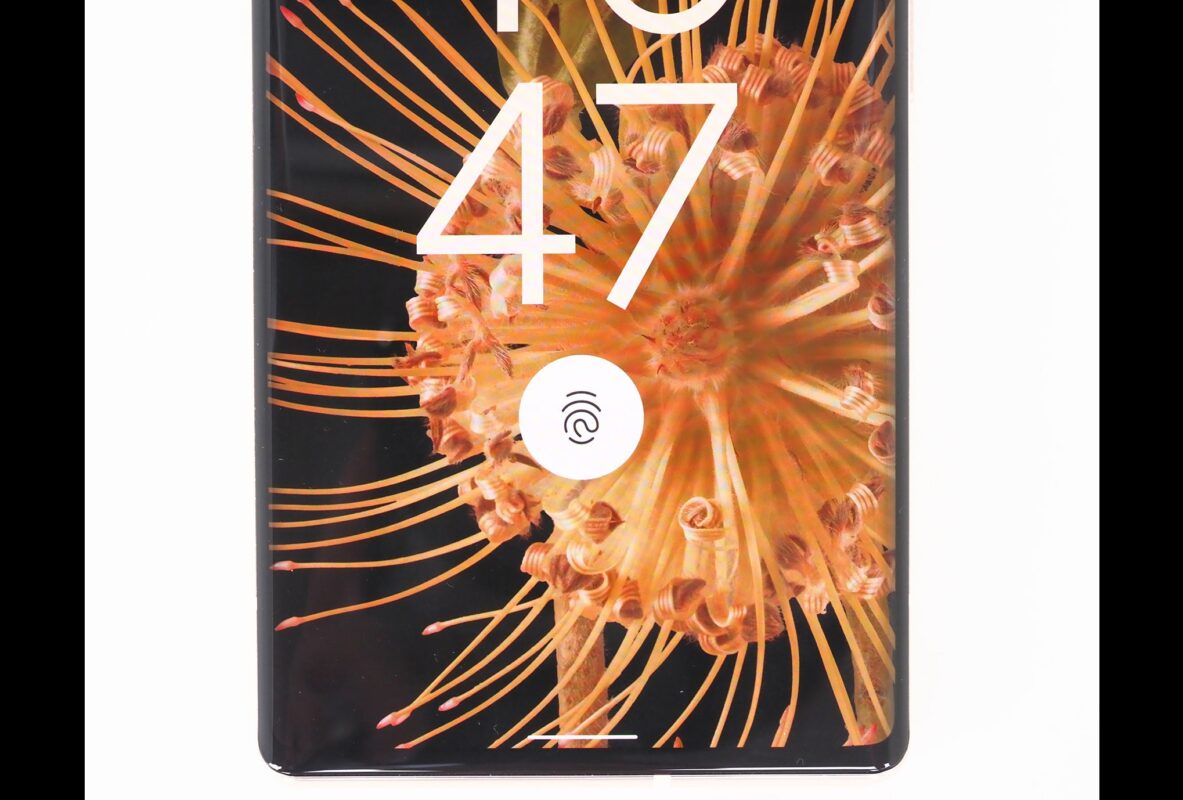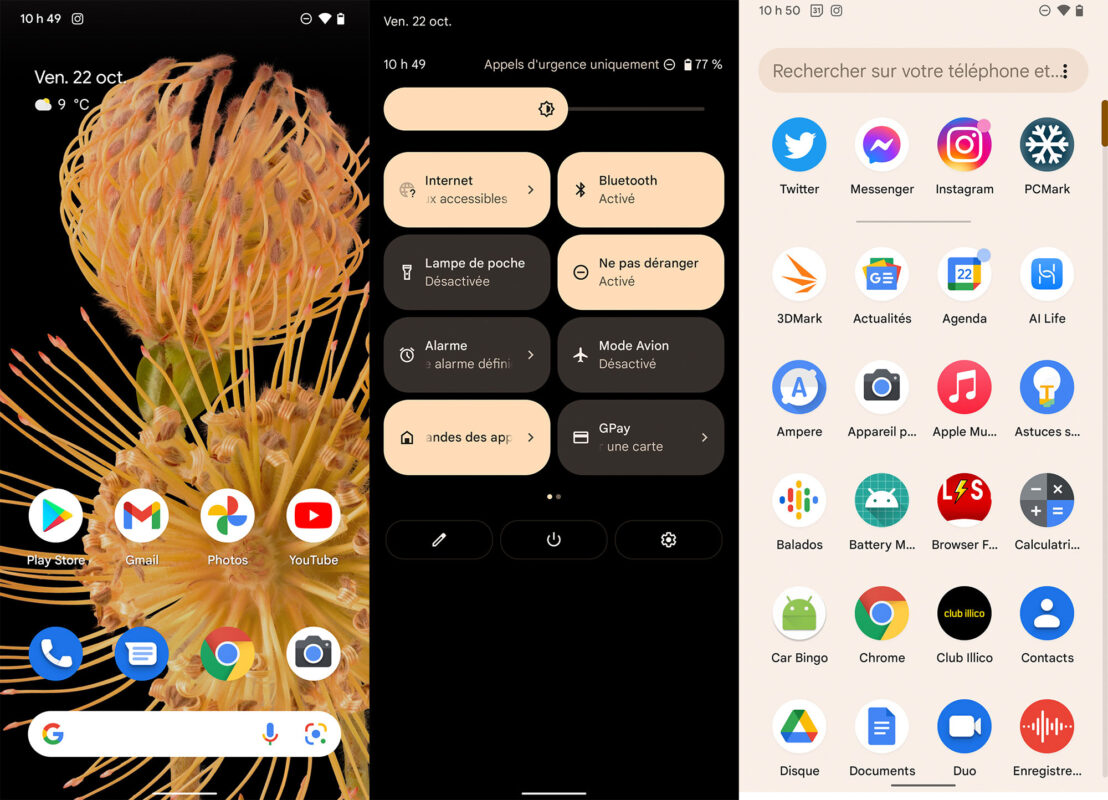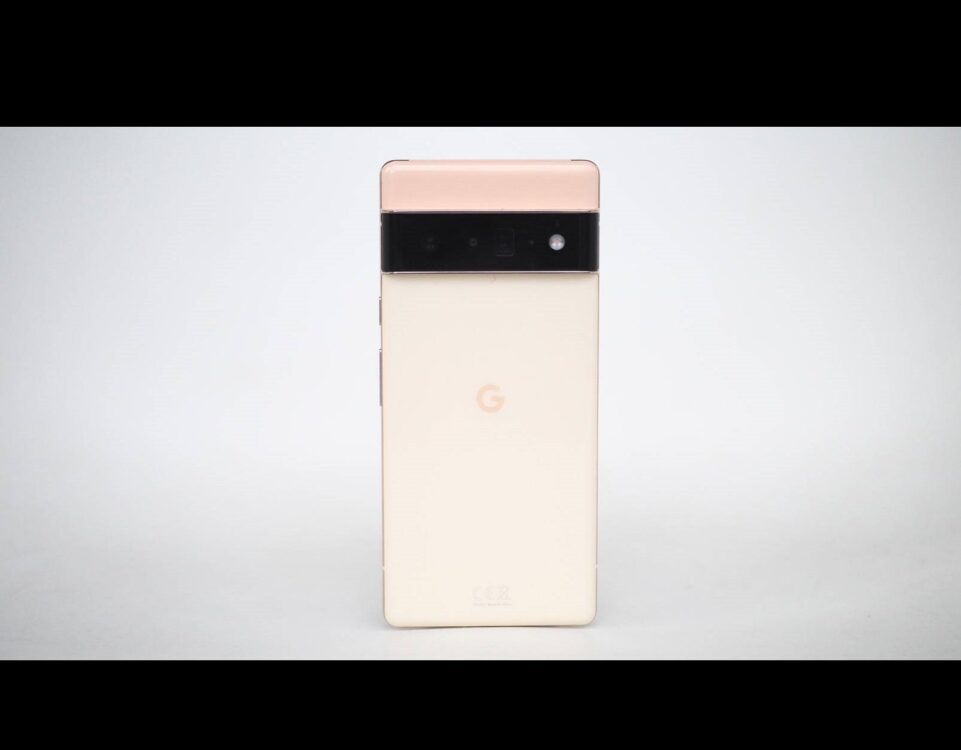After a few years of half-hearted releases, Google is back with a real high-end smartphone.
Design and grip: pretty, but big
You may also be interested in: New Gundam Breaker PC Version Full Game Free Download
With a 6.7-inch display, the Pixel 6 Pro is part of the category of giant format phones, along with the iPhone 13 Pro Max, Samsung Galaxy S21 Ultra, and the OnePlus 9 Pro, to name a few.
Of the lot, the Pixel 6 Pro is probably the one with the most daring design. The beige and salmon version, especially, gives the impression of a grandmother’s jewel of the last century. Its two colors and large camera bar don’t appeal to everyone, but, personally, I love it. It is one of the phones whose design and grip have marked me the most for several years.
However, I regret that the Pro version of the phone is only offered in this large format. The regular Pixel 6 is much smaller, and its spec sheet is also lower. Google isn’t the only company opting for a strategy like this: Samsung is doing the same thing with its Galaxy S21, whose quality increases with size. Apple’s way of doing things, where the Pro model of the iPhone is offered in two sizes, seems to be much more logical (and respectful of small hands).
A homemade processor that hits the target

The biggest question I had before testing the Pixel 6 Pro was about its processor, Google’s Tensor. While almost all Android phone makers in North America use Qualcomm processors, Google has decided to create its own system-on-a-chip, a strategy that has paid off for Apple in recent years.
The good news, the result is, on the whole, convincing. The phone’s interface is particularly smooth and, in the performance tests I did, the Tensor fared as well, if not better, than Qualcomm’s Snapdragon 888, which equips the Samsung Galaxy S21 and OnePlus 9 Pro.
A small downside, however: the Tensor has a processor dedicated to artificial intelligence, which is supposed to accelerate the AI tasks performed on the phone. In practice, however, I found that these functions – several of which are related to the camera, which we will discuss later – are on the contrary quite slow. It’s hard to say, however, whether the situation would have been better or worse without the Tensor, but it’s an aspect that deserves to be explored a little more.
The Tensor also doesn’t negatively affect the phone’s battery life. In the PCMark battery life test for Android Work 3.0, the device reaches 10 hours 58 minutes of continuous use, even with full resolution and 120Hz refresh rate enabled. It’s not a record, but it’s more than respectable. Expect to get through the busy days easily.
Overall, Google’s in-house processor doesn’t outperform the competition, but it doesn’t get outperformed either. It was the target to reach for a first-generation, and it portends beautiful things for the future.
The best camera on the market (when it doesn’t let us down)

The other expected element of the Pixel 6 Pro: it’s camera. Google has been recognized for several years for the quality of the software of its cameras, and this time, the company has also equipped its phone with sensors worthy of the name, capable of capturing 150% more light than that of the Pixel 5.
The result is often sensational. In the dim light, the 50-megapixel main sensor takes photos of astonishing richness. In the photo of a raspberry took just before the sun sets, the fruit is sharp and precise, and the background is slightly blurred, since the device retains its depth of field, even in difficult conditions. The difference is rarely as marked as in the photo below, but, in comparison, the same image with an iPhone 13 Pro here has less detail, more noise, and no depth (the Samsung Galaxy S21 Pro, for its part, fared much better).

By day, the phone takes great portraits (for all skin tones, in particular), and it even offers several features fun enough to create effects with moving subjects (so that a car is fixed while the background seems to move, for example).
The other cameras on the back of the Pixel 6 Pro (a 4X telephoto lens and a wide-angle lens) also hold up well, and I was impressed with the quality of the front camera, especially in portrait mode, where the cutting around the subject was particularly successful.
There are still some negative points, including a major one. In the dark, the white balance of the device is often completely missed. Yellowish lighting turns white, and a bright pink façade turns downright blue. This can probably be fixed with a software update, but, in the meantime, the problem is significant.

I also found that the night mode activated too easily and that the duration of taking photos at night (this mode that combines several images into one) was much too long, almost double the time taken by the iPhone 13 Pro. It is therefore necessary to remain stable for several seconds to succeed in his shot, which is not always possible.
Note that I was not very impressed by a feature of the Pixel 6 Pro that Google made a lot of noise, namely the ability to remove objects from an image, as it is possible to do for a few years with Photoshop. Even when it comes to an object that should be simple to remove (a logo on a cardboard box, for example), we can see that a treatment has been done in the image. This is, in my opinion, a feature that should be labeled “beta.”
A high-end technical sheet (like the others)

The other components of the Pixel 6 Pro are usually up to the task. Its LTPO OLED display is pretty, and its refresh rate reaches 120Hz, which, for example, makes scrolling text smoother.
We also appreciate its minimum capacity of 128 GB and its generous amount of RAM (12 GB). Overall, these features represent what is expected of a high-end Android phone in 2021.
I still have two negative points to raise: I found that the touch screen sometimes lacked precision on the sides. This is the first curved screen phone for Google, and perhaps the palm rejection technology (to prevent accidental contact from being recorded as an action) lacks finish. If so, it is also an issue that could be fixed with a software update.
I was also disappointed with the fingerprint reader under the screen. I’m not the biggest fan of this technology in general, but the Pixel 6 Pro is consistently longer to open than the Samsung Galaxy S21 Ultra.
Software updates: Excellent for Android

On the software side, the Pixel 6 Pro is equipped with Android 12, which offers a layer of paint frankly appreciated at the interface of Google’s operating system. The rounded buttons in the menus and the color of the interface that adjusts to the wallpaper make the experience particularly enjoyable.
Google promises three years of feature updates for the Pixel 6 Pro (which should therefore receive Android 13, 14, and 15), and five years of security updates. It’s great for Android, but we’d like a little more. On the iOS side, the iPhone 6S is after all in its sixth year of updates.
Good value for money
The Pixel 6 Pro is one of the best-performing phones on the market. It is fast, its autonomy is large, its camera is capable of small miracles (but also occasional failures), its design is bold and its software will be updated for a long time for an Android phone.
It’s in my opinion one of the three best phones on the market right now, along with the iPhone 13 Pro and Samsung Galaxy S21 Ultra.
But while the iPhone 13 Pro is sold for $1399, the iPhone 13 Pro Max, $1549, and the Galaxy S21 Ultra, $1649, the Pixel 6 Pro is offered at $1179. The price difference is significant.
This may be part of the reason for its popularity: even though the launch of the phone is scheduled for October 28, those who buy it right now will have to wait until December to receive it (probably there were still few devices available in Canada, which could explain such a delay).
Note that Google also offers the regular Pixel 6, with a 6.4-inch screen of a slightly lower quality, a smaller battery, less RAM, a less telephoto lens on the back, and a front camera of lower quality; it’s even cheaper, at $799. Unfortunately, it has not been possible to test it at this time.
If you are facing any issue in downloading or need assistance Click here .


